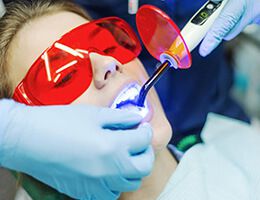Periodontitis, or gum disease, is the infection of the soft tissues surrounding the teeth and the bone supporting the same. This happens mostly due to the accumulation of bacteria over your teeth as a sticky film called plaque. Plaque hardens to form tartar which is even more challenging to remove. The stages of periodontal disease include Gingivitis, Early Periodontitis, moderate Periodontitis, and Advanced Periodontitis. A periodontist takes care of the treatment of periodontal disease.
The causes of periodontitis are multiple, the most common being the growth of bacteria on the teeth’ surface. There are over 700 different types of harmless bacteria residing in our mouths. If the teeth are not cleaned properly, the bacteria collects on the surface and forms plaque. This bacterial growth spreads towards the gum line and makes pockets in your gums. The bacteria would multiply rapidly in these pockets. Our immune system, as well as the bacterial toxins that are produced, destroy the bone and gum around the teeth. The teeth become loose and could fall off after a few weeks.
The disease is common in patients with smoking habits, diabetes, and women with significant hormonal changes.
The first signs of periodontal disease are the yellowish layer spotted on the surface of the teeth, and the gums appear swollen. Every time you brush your teeth, your gums may bleed. This is the gingivitis phase. If proper oral hygiene practices are followed, it does not grow further. Otherwise, it turns into the more serious Periodontitis phase. The following symptoms are noticed:
Sometimes patients complain about how their ‘bite’ has changed. This mainly happens due to the mispositioning of the teeth and the formation of extra spaces between them.
After getting oral hygiene guidelines, you would go through a professional cleaning session removing the bacterial deposits in the gum pockets. In extreme cases, corrective surgical therapy is used to get rid of the plaque.
Please reach out to Persimmon Dental Care in Dublin, CA, to have a consultation with our dentists. Please call us at (925) 999-8282 or schedule an online consultation, and we’ll guide you further.













MON - FRI 9:00 am - 6:00 pm
SAT - SUN Closed